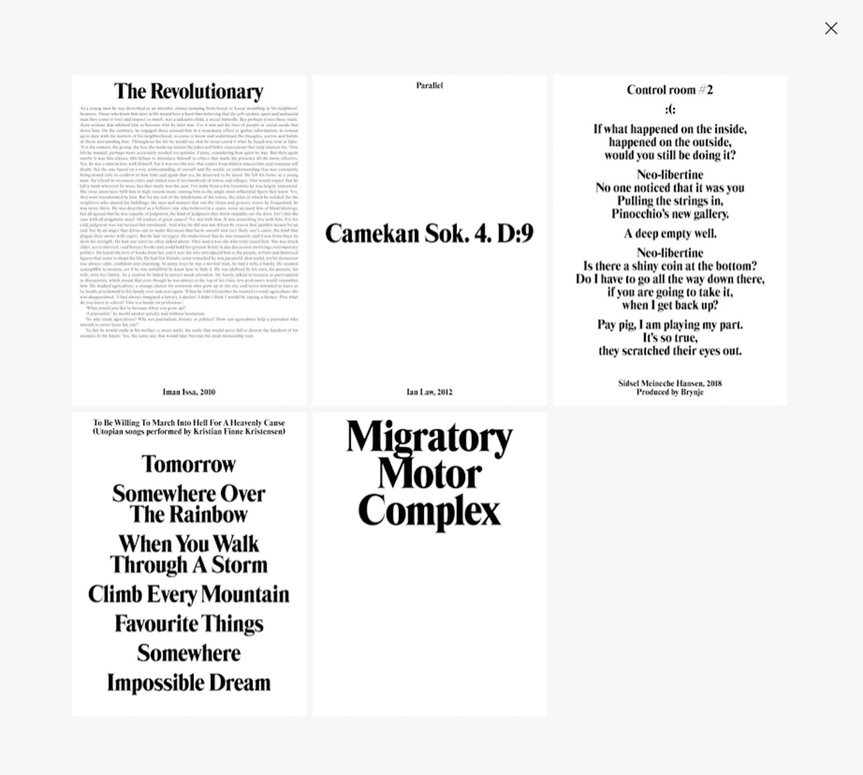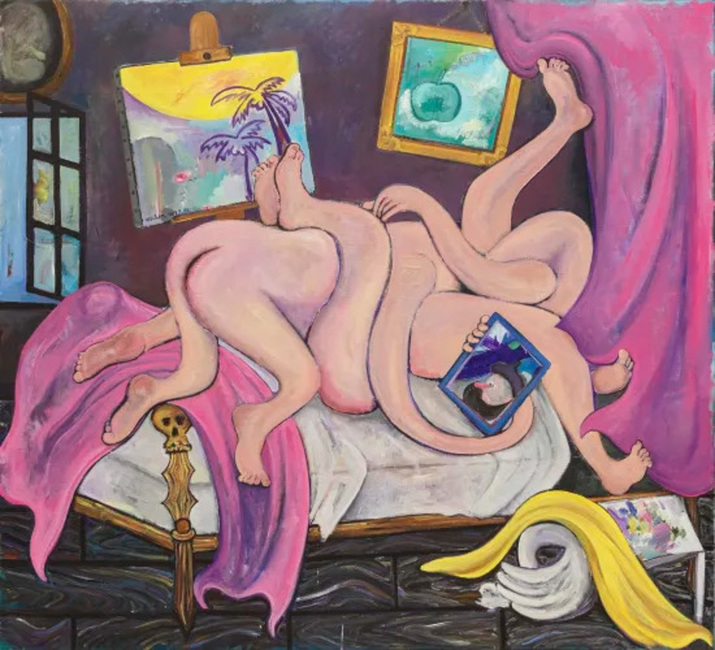
R
E
V N
E
X
T
Screenshot of the virtual booth of Mehdi Chouakri Gallery (Berlin), at Art Basel Online Viewing Room (OVR), 2020. All screenshots by Peter Chung for ArtAsiaPacific.
It was supposed to be the 50th anniversary of Art Basel in Basel. Instead, June 2020 brought the second edition, within three months, of the Art Basel Online Viewing Rooms (OVR), the digital simulacrum of an art fair inspired by the impossibility of bringing together 90,000 visitors to look at nearly 300 galleries from around the world to the Messeplatz in Basel. All you need to visit is an email address, and you’re set to click (or swipe, if you’re on the app) through more than 4,000 artworks offered by 282 galleries from 35 countries. But you’ll have to be content with looking at jpegs and watching Vimeo links—all essential parts of the coronavirus media diet.
For those who remember the debut of the OVR in March, in lieu of the canceled Art Basel Hong Kong, your first thought might be: The bench is gone! Art Basel jettisoned its initial attempt to create the impression of the artworks installed in a fair booth—with a midcentury modern George Nelson platform bench, for scale—but has allowed galleries to show videos, sound works, and multiple images of each piece, expanding the possibilities for sculptures and projected or physical installations.
Galleries have made efforts to stand out, with thematic presentations (outdoor sculpture is popular this year); platform-specific showcases, such as Rodeo gallery’s “Five Sound Works,” with collectors required to gift the works to a museum; and various gimmicks such as rotating displays. Mehdi Chouakri, for example, had three: one by all women, one by all men, and one comprising all paintings by modernist abstract painter Willy De Sauter (why De Sauter is unclear). Galerie Jocelyn Wolff, meanwhile, organized its selection of works by a different color each day. Hauser & Wirth’s slightly obsequious yet solipsistic homage to Art Basel’s 50th anniversary, with works that have “played a central role in the gallery’s rich history of presentations at the fair,” included a painting by On Kawara from June 5, 1970, produced at the time of the inaugural event (and 22 years before Hauser & Wirth was founded).
Stalwart Art Basel exhibitors from Asia followed what has worked for them in past editions of the fair. South Korea’s queenpin, Kukje Gallery (Seoul), featured its Dansaekhwa artists as well as international heavyweights like Alexander Calder and Nam June Paik, with seven-figure works by both artists offered at the start of the fair. Taka Ishii (Tokyo / Hong Kong) showed paintings by Mario García Torres and Nobuya Hoki, and color-field-like abstract photographs by Hanako Murakami. Take Ninagawa (Tokyo) opted for a group presentation of gallery artists including Danh Vo, Shinro Ohtake, and Kazuko Miyamoto; the latter’s minimalist sculptural composition in string, Musical Wall Piece for Ryo Watanabe’s Livingroom (1979), was on offer for between USD 100,001 and USD 250,000. Mumbai’s Chemould Prescott Road featured works by six artists including NS Harsha’s installation of a bamboo ladder with paintings of the night sky on hanging fabrics, Ascent or Descent to Reality (2018), shown in the artist’s 2019 solo exhibition at the Centre for Heritage, Arts and Textile in Hong Kong. Vitamin Creative Space (Guangzhou) had a solo presentation, this year of Koki Tanaka’s project (created for the 2019 Aichi Triennale) featuring native Japanese speakers originally from Bangladesh, Bolivia, Brazil, and the Korean peninsula.
Since everyone is in survival mode, Art Basel allowed the 18 galleries in Statements, which typically spotlight one emerging artist each, to expand their lineups to a maximum of three. Magician Space (Beijing) presented comic paintings by Wu Chen; Guo Cheng’s sculptures and videos; and Liu Yefu’s performative videos. Titled “Brutality,” BANK (Shanghai)’s OVR featured body-focused works including performative pieces by Patty Chang and young artist Chen Tianzhuo, as well as grotesque sculptures by Jin Shan. Union Pacific (London) offered Urara Tsuchiya’s erotic ceramic sculptures, which had been a hit at Liste a couple of years ago. Grey Noise (Dubai) kept to its solo showcase of the domestic found-object-inspired works (“metaphorical museum settlers”) of Shreyas Karle.
Galleries in the Features section—traditionally for a historical presentation of a single artist’s work—also took the opportunity to show multiple artists. Jhaveri Contemporary (Mumbai), which was originally going to exhibit bronze sculptures and etchings by Mrinalini Mukherjee (1949–2015), added 1980s photographs of abandoned spaces by Simryn Gill and photograms of plants by Anwar Jalal Shemza (1928–1985). Experimenter (Kolkata)’s OVR, “Cataloging Time,” showed a range of works by Bani Abidi, multimedia projects by the collective CAMP, and Sohrab Hura’s night photos and films. Hosfelt Gallery (San Francisco)’s trio exhibition, “(im)possible realities,” included Rina Banerjee’s installation made with chandeliers and brown-glass bottles, as well as Patricia Piccinini’s hyperrealistic, human-animal figures, which seem like appropriate metaphors for the mixture of the surreal and familiar that is the world today.
HG Masters is the deputy editor and deputy publisher of ArtAsiaPacific.
Art Basel’s Online Viewing Rooms are accessible until June 26, 2020, 1 PM CET.
To read more of ArtAsiaPacific’s articles, visit our Digital Library.















